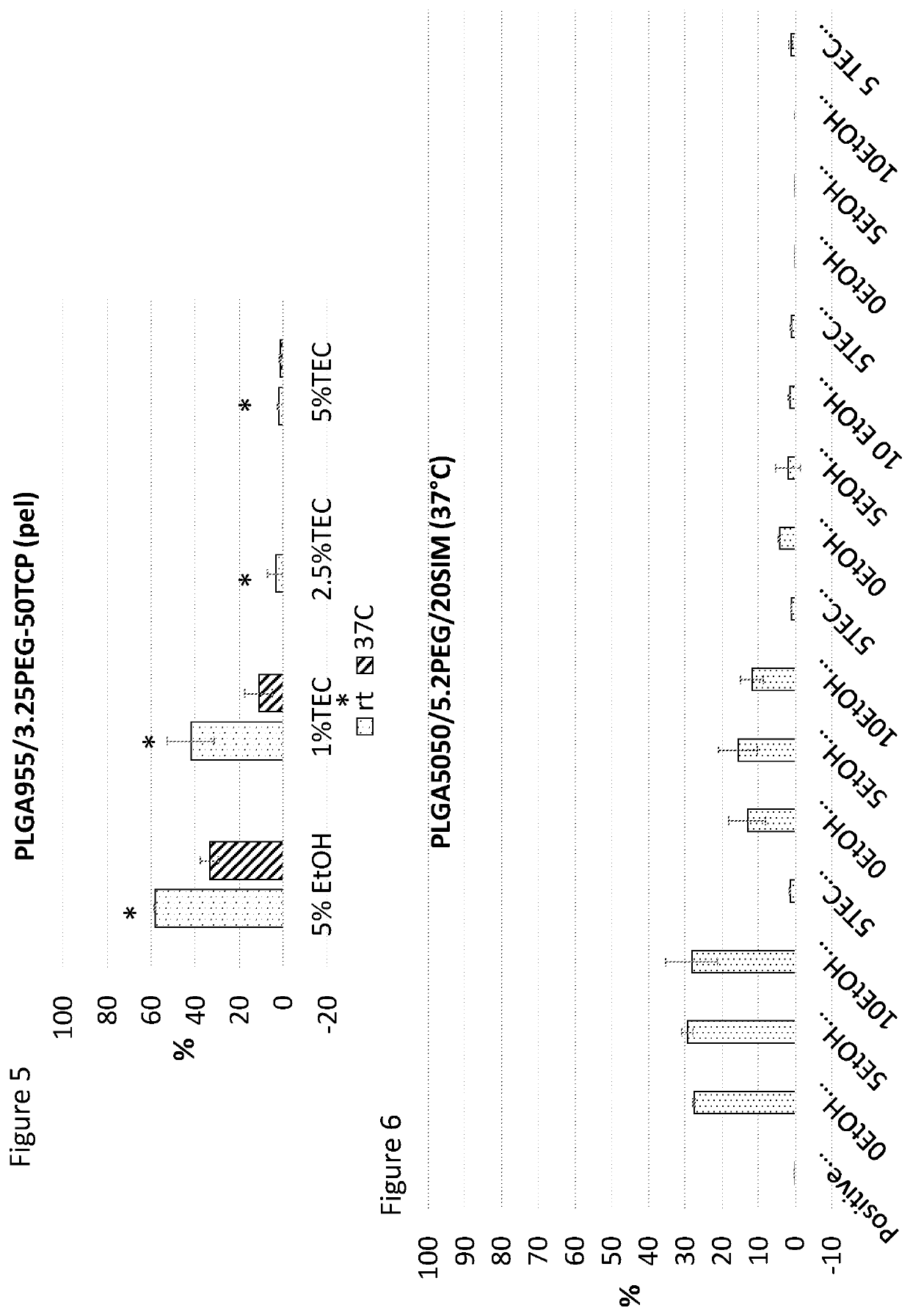Tissue scaffold and scaffold composition
a tissue scaffold and composition technology, applied in the field of regenerative medicine, can solve the problems of poor vascularisation, poor ability to re-establish original bone properties, and long healing process, and achieve the effects of high porosity, and good compressive strength and/or young's modulus
- Summary
- Abstract
- Description
- Claims
- Application Information
AI Technical Summary
Benefits of technology
Problems solved by technology
Method used
Image
Examples
example 1
ellet Scaffolds
[0431]This document discusses research into the development of smart pastes, able to set at different times and at different temperatures, to be used alone or in combination with drugs, growth factors, genes or cells. In this example, these pastes were made by two main components, PLGA or PLGA / ceramic pellets and a liquid carrier.
[0432]Whilst the examples of Example 1 are provided in relation to non-hollow polymer pellets, the skilled person will understand that the same principles will apply in terms of scaffold setting and formation properties and conditions (with exception of the advantages identified in Example 2 and the invention herein for using a hollow polymer pellet).
[0433]Calcium sulphate (CS) and β-Tricalcium Phosphate (β-TCP) are the ceramic investigated. They have previously been shown to induce bone formation in vivo and act to reduce the overall cost of goods of a potential end product. It was therefore investigated if ceramics could be included for thi...
example 2
lymer Pellets
[0546]Manufacture
[0547]1. Introduction
[0548]The aim of the work was to produce hollow micro pellets of PLGA based tube.
[0549]Hollow polymer pellets can generally be produced in a 3 step process.[0550]1st step: preparation of standard pellets (300 um diameter, 500 um length) by twin screw extrusion of dry raw materials, followed by pelletisation. (See ‘Example—TAOS’ pellets production by HME process' above)[0551]2nd step: preparation of hollow tubes by single screw extrusion of the standard pellets prepared in step 1.[0552]3rd step: pelletisation of the hollow tubes prepared in step 2 to get hollow pellets (450-500 um diameter, 500 um length).
[0553]2. Experimental
[0554]Two batches (approx. 200 g) of material were pre-compounded and provided. Based on a PLGA matrix, one grade (PLGA-PEG) contained 6.5% w / w polyethylene glycol 400; the second grade (PLGA-CS-PEG) also contained 50% w / w loading of calcium sulphate filler.
[0555]PLGA-PEG Batch:
[0556]PLGA95:5=93.5% w / w
[0557]PEG4...
PUM
| Property | Measurement | Unit |
|---|---|---|
| body temperature | aaaaa | aaaaa |
| temperature | aaaaa | aaaaa |
| humidity | aaaaa | aaaaa |
Abstract
Description
Claims
Application Information
 Login to View More
Login to View More - R&D Engineer
- R&D Manager
- IP Professional
- Industry Leading Data Capabilities
- Powerful AI technology
- Patent DNA Extraction
Browse by: Latest US Patents, China's latest patents, Technical Efficacy Thesaurus, Application Domain, Technology Topic, Popular Technical Reports.
© 2024 PatSnap. All rights reserved.Legal|Privacy policy|Modern Slavery Act Transparency Statement|Sitemap|About US| Contact US: help@patsnap.com










